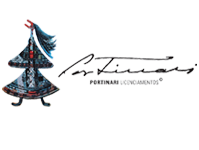Mentioned By14
General Info
Title
The Arrival of Dom João VI to Bahia
Description
Composition in red, ochre, yellow, green, earthy, blue, orange, white, gray, violet, lilac and black tone. Smooth texture is prevalent, but thick in the most prominent figures. It depicts the arrival of King John VI to Bahia, represented by various groups of people - formed as if in a great parade interspersed with poles with flags and banners, against the background of a port, caravels ,the sea, hill with vegetation, church and houses. The groups of people, all standing, form columns and diagonals, cutting in vertically different directions composition. The entire area where the figures are is geometrized - not only on the ground but in the bodies of the characters, giving light and shadow effects. Each group of extras in the foreground is leading a column of people in perspective toward the background or sideways. In the foreground, from the left to the right: a Bahian woman facing forward with her right hand holding a rectangular board that she carries on her head; two men looking back, side to side, 3/4 facing right, with blond and long hair tied at the nape, wearing doublet; Dom João facing forward, head turned to the left, right arm along the body and left bent at the waist holding a paper tube in hand. He wears a hat shaped like a half-moon, yellow jacket with epaulets, blue knee-length pants, stockings and court shoes; Dona Charlotte Joaquina, holding arms with Dom João also facing forward, with the head toward to the right, white hair combed back, wearing white gown; slightly behind, Dona Carlota, facing the representation of Dom Pedro I as a child wearing red suit with white collar; behind the boy, Dona Teresa Cristina looking to the right, wearing green clothes and neck-high collar; a little apart and looking in the direction of the Portuguese family, two figures, one after the other, 3/4 directed to the left: the first, possibly the governor of the province at the time, has white hair tied back and wears orange jerkin; the other, possibly the Bishop of Salvador, wears a red and skullcap mantle; to the right end, the representation of the Viscount of Cairu, with his head turned to the left, holding the hand of a girl who also looks toward the family and wears long dress with ruffled collar and cuffs; by the Viscount's side , a man standing, looking in the same direction as the others, white and long hair, wearing jacket with epaulets and red socks. Among the shoulders of these figures, one sees two faces and part of the body of a third woman, looking to the royal family. On the left half of the composition, based on the Bahia foreground, a group of people directed to the right; more to the bottom, the group headed by the English family, forming a single column in perspective to the sea and making a angle to the left, at the height of the dock. To the right half of the composition, beginning in the background, a line formed by soldiers of the military police, standing diagonally from the right to the left and front to back. Among the group of people on the left half and this wing of soldiers, six tall poles with flags on the ends. Behind the soldiers, forming another wing in the same position, the cavalry police. Both foot soldiers and mounted police wear hats that resemble those of bandits and have defined facial features: the first are represented in red, including the face, and the other in ochre, including the horses. Behind the cavalry, a multitude of representation with big set figures, according to the same perspective as the sea. In the third level, behind the crowd, on the right in the center of the composition, the facade of Conceição da Praia Church and next to this, two identical colonial buildings: three floors and no roof. On the hill behind the church, a block of irregular buildings, a few scattered houses and vegetation. The contour of the foot of the hill can be determined by tripping behind the cavalry and occupies 2/3 of the width of the third plane of composition. On the far right of the support, led by the Viscount of Cairu in the foreground, another column of people, forming a slight diagonal from the left to the right and front to back. This group comes out of a high arch topped by a flag four corners, and some of them carry banners. On the far left and cut by the edge of the composition, two caravels docked with full sail and blue flags. Bordering the pier, a row of poles with flags on top. In the background, the sea, three ships facing front, with full sail, placed diagonally to the right and from front to back. Ahead, a small ship to the side and further back, three other smaller vessels. On the horizon, representation of slight elevations. Clear blue sky with a big cloud in the center.
Location Created
Author
About
Themes
Function
Artwork Function
Executed toArtworkFunctionType
Artwork Function Description
Work executed to decorate a hall in the headquarters of the Banco da Bahia in Salvador, BA.
Support and Technique
Collection
Collection
Banco BBMCollection
Dimensions
Height (cm)
381
Width (cm)
580
Signature and annotation
Annotation
Signed and dated in bottom right corner "PORTINARI RIO 1952"
Relations
Related Document317
Related Event10















